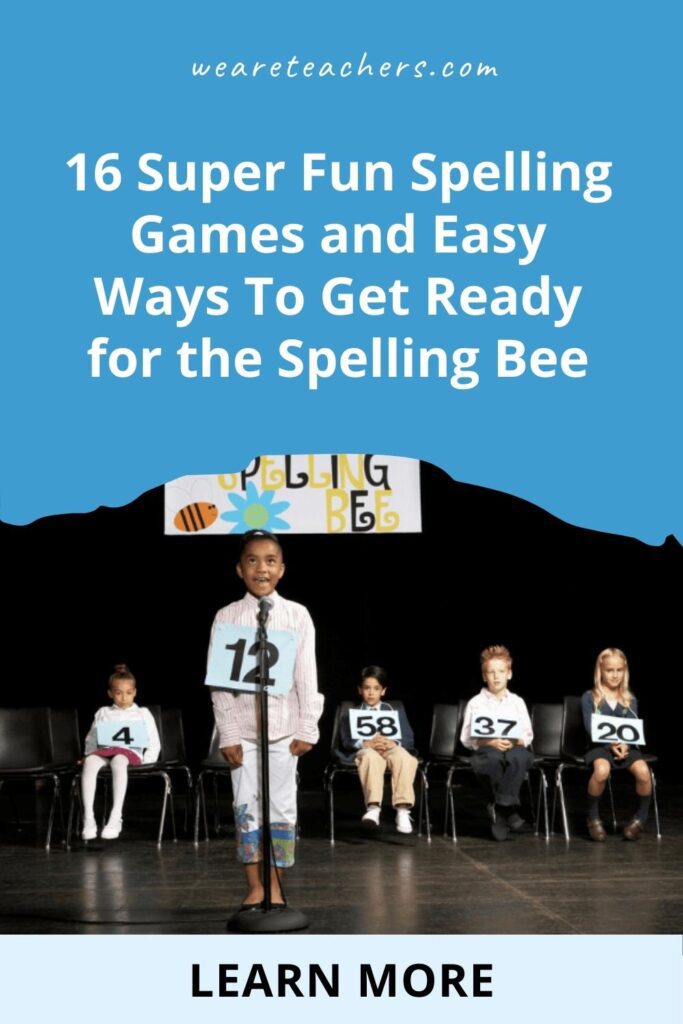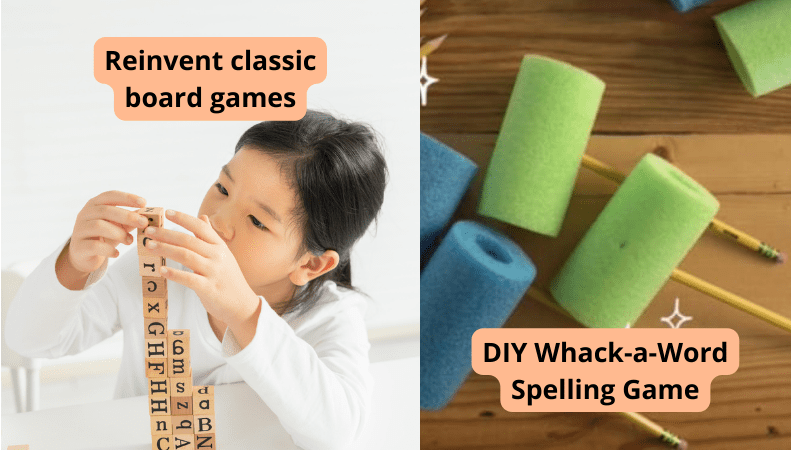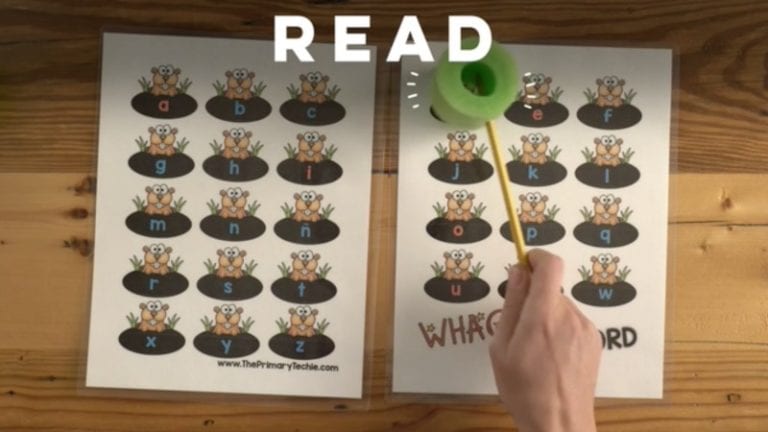What is it about the power of words? We sure seem to love them. Don’t believe me? Consider this: In January of 2022, almost 2 million people were signing in to play Wordle every day. Not only do we love playing with words ourselves, we also love watching others do the same. In fact, in 2015, there were more people tweeting about the Scripps National Spelling Bee than tweeting about Game of Thrones or The Bachelorette!
Our students love words and spelling as much as we do, maybe even more. With that in mind, we’ve compiled some of our favorite spelling games and a bunch of great tips for holding a spelling bee in your school this year. Enjoy!
1. Make them jump for joy with this active spelling game.
Print out and laminate colored paper with one letter of the alphabet on its own page. Choose all the letters that show up in your weekly spelling words, the vocabulary words in your current lesson, or any other words your class is currently learning. Spread them out in a circle with room for one person in the middle. Then, have students take turns standing in the center of the letters. Give them a word and see if they can jump on the letters needed to spell it correctly. Your students will love trying to land on the right ones.
2. Enroll your school in the Scripps National Spelling Bee.
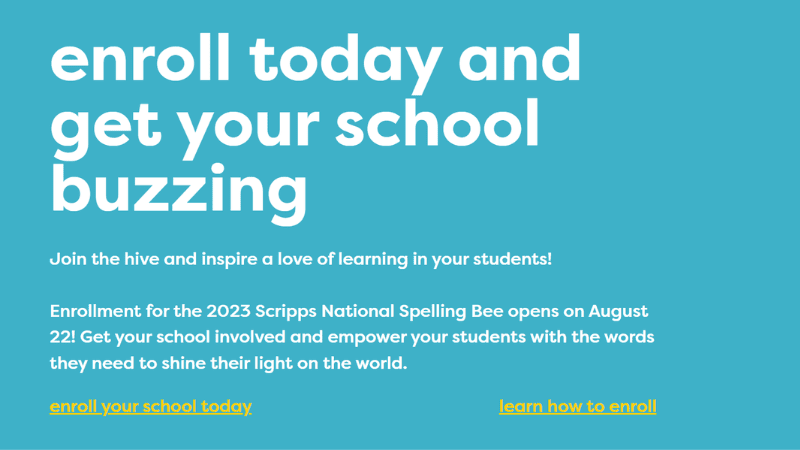
Even if you’re only thinking about holding a small bee in your classroom, the Scripps National Spelling Bee has tons of great resources ready to help you out. Already know you want your entire school to participate? Awesome! The Scripps National Spelling Bee website makes it super easy to enroll. Just follow the instructions on the Enroll Today page. It walks you through everything needed to get started. They’ve even made an awesome step-by-step video to help you out.
3. Keep it simple but fun with easy spelling games.
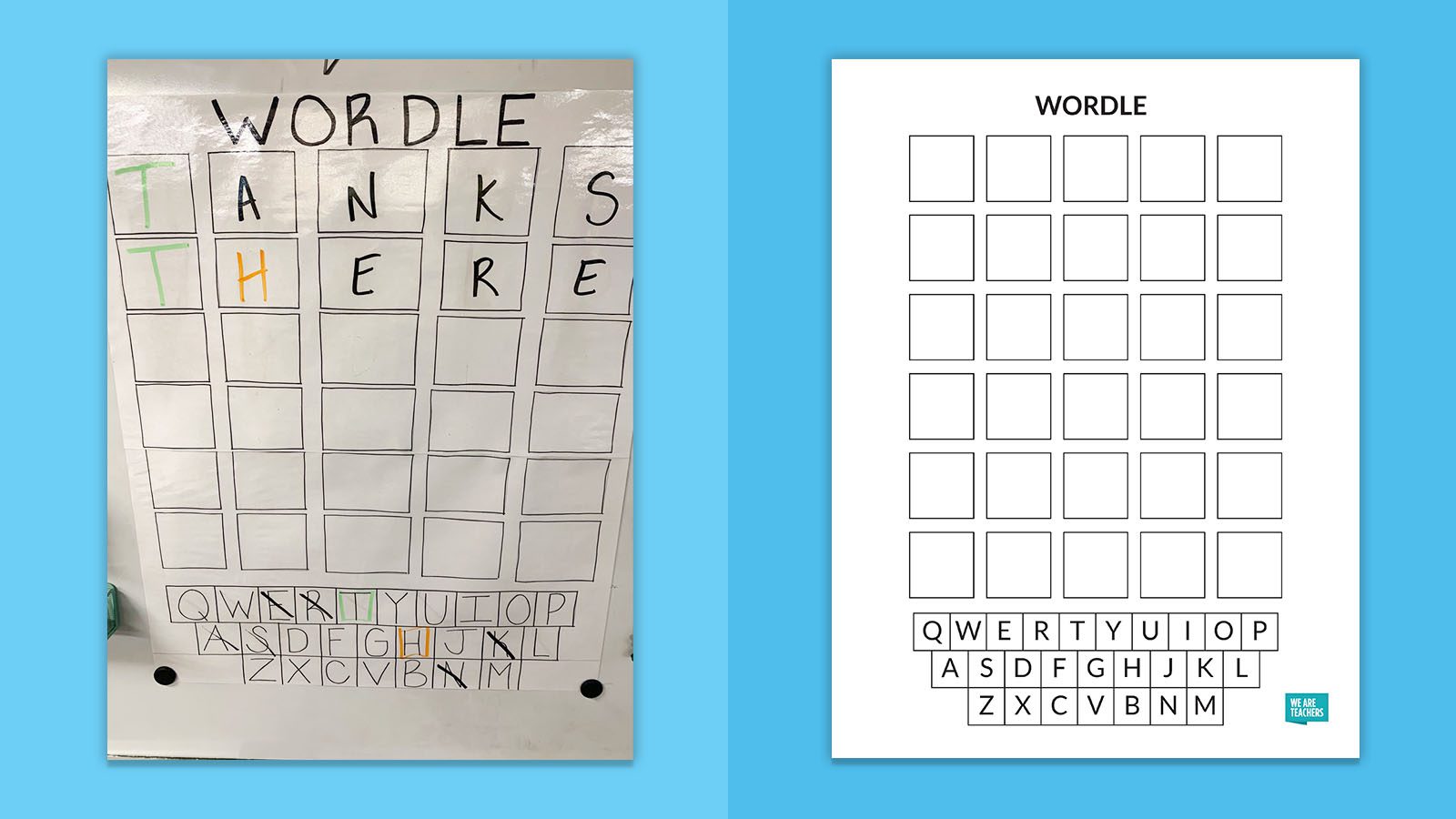
I love an engaging, whole-class spelling game as much as the next teacher, but sometimes it’s the simple, familiar ones that give the biggest bang for their buck. Crossword puzzles, word searches, and games like Hangman (or Snowman, if you want to try a more positive version) are perfect activities for early finishers or students who want a fun way to play with words and spelling. Check out how you can even use Wordle for a quick and easy spelling game.
4. Use the resources from the Scripps National Spelling Bee to get started.
Once registered, you’ll gain access to all of the resources available to help students prepare for the bee. The site does an amazing job of walking Bee Coordinators (the staff member who is going to coordinate the bee) through the planning process. There are videos and PDF files to help you choose whether your bee will be classroom-only or school-wide. Similarly, there are instructions for whether you will hold your bee in-person or, if need be, virtually. Additionally, teachers gain access to all of the materials Scripps provides to support literacy instruction regardless of whether or not a class participates in a bee. You will get word lists, competition lists, step-by-step instructions on how to hold small bees in your own classroom or school-wide bees, and more.
5. Start building excitement with your students.
This is the fun part. While the competition itself will speak to some of our students, there are plenty of ways to get all your students excited about your upcoming spelling bee. For some, nothing is more exciting than the prospect of prizes. If you have some students who would flip for a baseball cap or other prize, check out the Scripps National Spelling Bee Shop and choose a few items to use as rewards for winners and participants.
Help your students start looking forward to this spelling adventure by showing them some of the excitement of previous Scripps National Spelling Bees. Even the most reluctant speller will have a hard time keeping a straight face while watching a young contestant learn that the word he has to spell is “sardoodledom.” As you pass out the word lists, have students share the ones they feel are the weirdest, funniest, or maybe even the most difficult.
Or inspire them with an afternoon (or rainy-day recess) showing of Akeelah and the Bee, an excellent film about an 11-year-old girl from South Los Angeles with a talent for spelling. Your students will cheer on Akeelah as she fights the odds to make it to the Scripps National Spelling Bee while perhaps becoming inspired to work toward that same goal themselves.
6. Let your students whack-a-word with an easy-to-make spelling game.
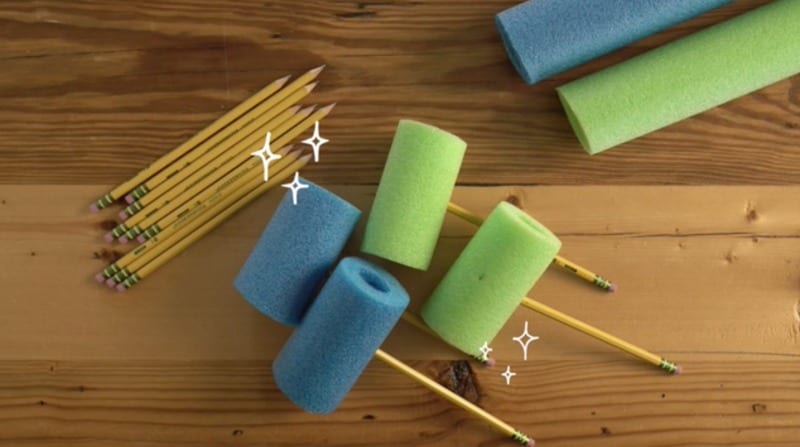
You can use pool noodles from your local dollar store for so many things. First grade teacher Autumn Morrison figured out how to use them for a really cute spelling game. With just a pair of scissors, a pool noodle, and some pencils, you can create a set of safe, soft mallets your students can use to whack the letters they’ll need to spell your current spelling words, vocabulary words, sight words, etc. I don’t know any student who wouldn’t love this idea!
7. Make it a family activity.

The Scripps National Spelling Bee has teachers’ backs with easy-to-read information and even email templates to send home to parents. Make sure you reach out to your students’ parents to let them know what’s going on and how they can get involved. Helping their child study is one of the most obvious methods of participation, but they may also want to volunteer to be an official during your competition or help plan the school-wide spelling bee.
8. Add some vocabulary-rich books to your classroom library.
One of the greatest aspects of the Scripps National Spelling Bee organization is its commitment to more than just spelling bees. It wants students to “Rule the Word” by building their vocabulary and reading comprehension skills. Each year, the Bee publishes the School Spelling Bee Study List, a list of 450 words to help students prepare for school-level spelling bees. These words come from a list of books carefully selected by the Bee for their engaging and age-appropriate content as well as their rich vocabulary. The Great Words, Great Works list is available to all teachers and is broken down by grade level and/or by reading level.
9. Turn Silent Ball into Spelling Ball.
Students love Silent Ball. This game is easy to set up and gives your class the chance to take a break and have some fun while learning. It’s a surefire way to boost their energy and mood. Tap into the Silent Ball phenomenon while also reviewing your spelling words just by asking students to spell one of the words they’re studying in class one letter at a time as they pass the ball around. In this version, students are “out” not when they talk or drop the ball, but when they misspell the word. The game can be easily modified to provide more support by writing the letters on the board as students say them or letting students have a copy of the words on their desk.
10. Download the Word Club app so your students can practice on their devices.
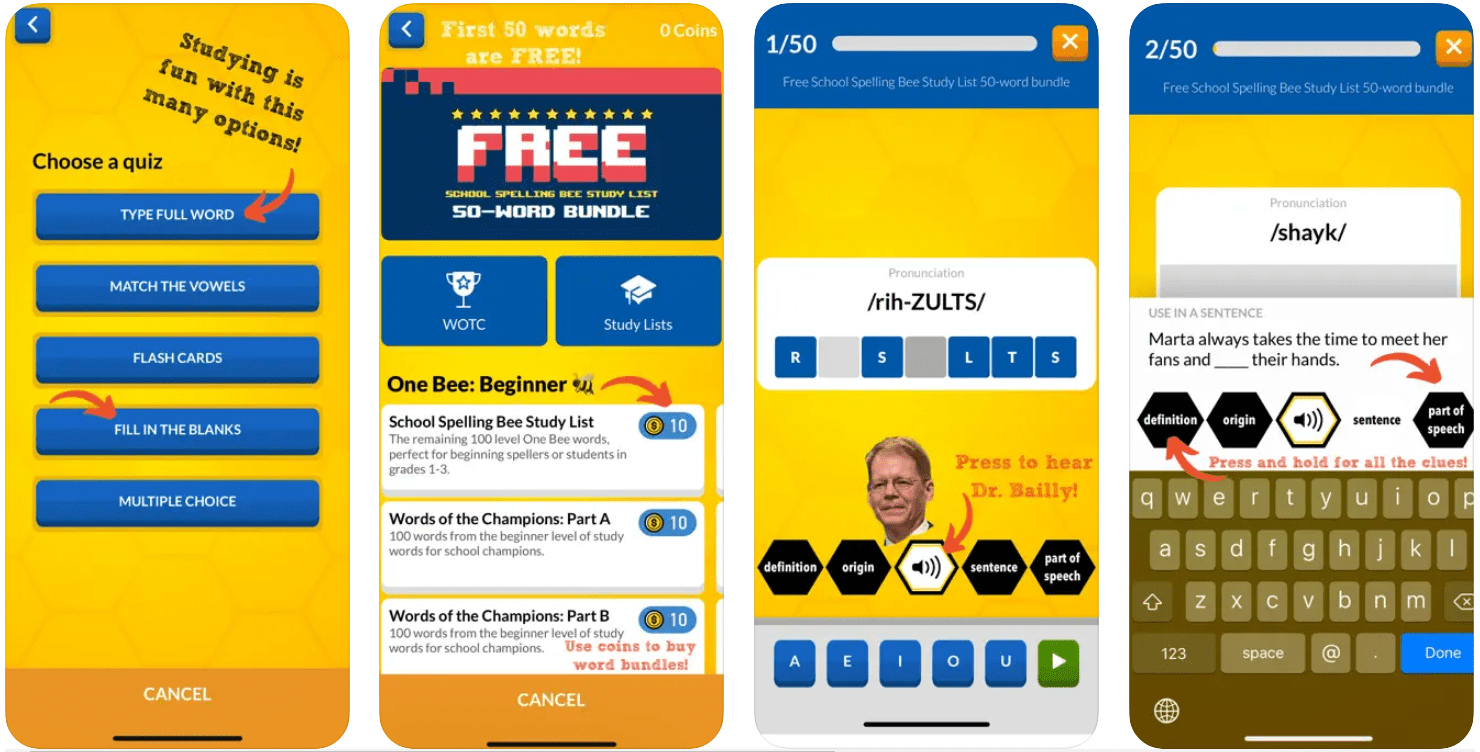
Another free resource provided by the Scripps National Spelling Bee is an app called Word Club for mobile devices and tablets. This year, the app is completely free, allowing students to learn all the words on the 2023 School Spelling Bee Study List and 2023 Words of Champions, the regional study list. The game-play style will keep students motivated and is adaptable to different study and quiz styles for both spelling and vocabulary.
11. Make spelling a whole-class activity with Spelling Word Bingo.
By making your classroom or school spelling bee an important event, you’re sending the message that spelling is a useful and worthwhile skill. As students and their families start to get excited, it will become even easier to make spelling instruction an important and valued part of daily instruction. Whether it’s something relatively simple like a memory game of matching words to definitions, or a fun whole-class activity like spelling word bingo, your students will look forward to the time they spend studying words. As a teacher, you can remain up-to-date with the latest in spelling bee news and instruction by signing up for The Beehive, a biweekly newsletter crafted especially for teachers by the Scripps National Spelling Bee.
12. Hold some practice bees.

There are several different formats you can use to hold your classroom or school-wide spelling bee. Because of this, it’s a good idea to give your students a chance to see what the format will look like. This is also a great time to go over the rules your students will be expected to follow. For example, according to the Scripps National Spelling Bee rules, a student can’t start to spell a word, realize they made a mistake, and go back and fix it. It will take practice for your students to learn to slow down and really think before starting to spell. By practicing first, students will be ready to go when the big day arrives.
13. Involve the entire community.
There’s something about spelling bees that invokes a feeling of nostalgia and pride in many community members. Maybe they remember their own spelling bee experience. Perhaps they like hearing that schools are still participating in activities that have been part of the educational landscape since 1925. Whatever the reason, spelling bees provide an excellent opportunity for community outreach. Ask local businesses to sponsor prizes for bee participants and winners. See if community members are willing to help with the setup and running of the bee. By making your school spelling bee a community event, you’re showing students that their hard work matters.
14. Reinvent classic games with a spelling twist.
It’s awesome how many teachers have found ways to make classic board games into fun ways to practice important skills like spelling. Mrs. T’s First Grade Class came up with a great way to turn Battleship into a spelling review game your students will beg you to play. Instead of guessing coordinates to find out if they hit or miss, in this version, your students will discover if they landed on a letter or not. You could even send coordinate grids home so students can play and review with their families.
15. Encourage your students to cheer for their classmates.
The vibe surrounding your bee is going to be largely dependent on you and your school. If you make it a big deal, your students will respond accordingly. Encourage students to cheer for their participating peers. Discuss good sportsmanship with students who are participating and with students who are cheering for their friends. A school-wide spelling bee is a great opportunity to discuss and model appropriate ways to support people during competition. It’s also an opportunity to model how to support peers when they lose. These skills aren’t only useful during the bee, they’re lifelong empathy-building skills that will serve them well forever.
16. Celebrate all your students for becoming better spellers.
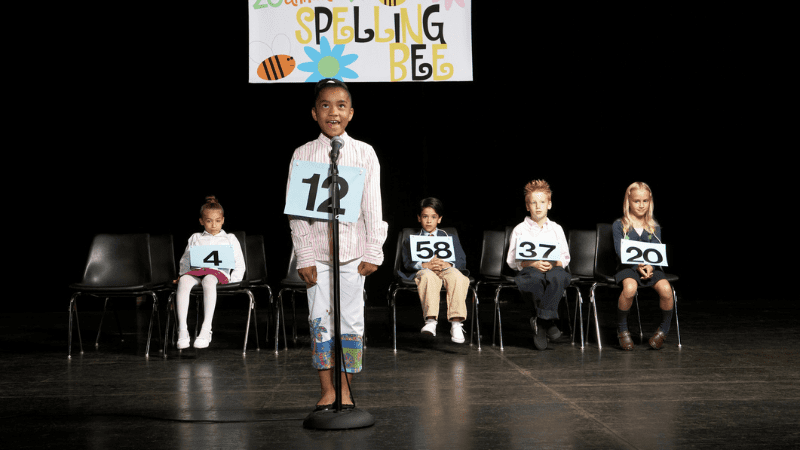
All of our students deserve acknowledgment for striving to become better spellers. The Scripps National Spelling Bee even provides a wide assortment of certificates for participants to feel recognized and celebrated. Categories like “Most Improved Speller,” “Best Sportsmanship Award,” “Poise Award,” “Best Peer Coach Award,” and more give opportunities to recognize all students for their efforts.
Even if a student chose not to participate in a bee or participated but was disqualified in the early rounds, they’re better off for having studied spelling words. Studies have shown that spelling instruction improves reading ability, and in a world where young people often communicate more via texts, emails, and online messaging, improving spelling means they will be better understood later in life.
